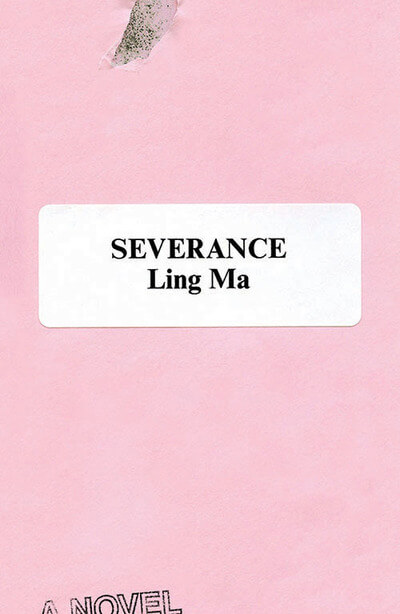These masters of mystery prove they haven’t lost one ounce of their power to shock, thrill and enthrall.
Marked Man
I like Archer Mayor novels for much the same reason that I like Ed McBain novels: Both are populated by cops who are ever so slightly caricatures, with internecine feuds and barbed humor, but who come together as a unit when circumstances demand. In Vermont Bureau of Investigation agent Joe Gunther’s 32nd mystery, Marked Man, Joe and his team investigate the murder of a high-rolling restaurateur. The case comes to them in a most unusual way. Nine months back, the decedent passed away, seemingly due to natural causes, and donated his body to medical science. In the middle of a routine anatomical practice procedure, a medical student discovered that the corpse was likely a victim of a careful but very effective suffocation. One murder leads to another, and another, and the extended family of victim number one seems like the place to start looking for the killer or killers. If only it were that simple. Add a couple of bumbling, aging mobsters to the mix, and the fact that seemingly everyone has one deep dark secret worthy of extreme concealment measures, and it all gets very complicated very quickly. Marked Man is an excellent read, with a surprise ending and then one more surprise for good measure.
The Burning
I am not usually a fan of author duos, but I make exceptions for Charles Todd, Nicci French and the father/son team of Jonathan and Jesse Kellerman, all of whom have bottled the elusive genie of collaboration. This month, Kellerman père et fils return with The Burning, the latest installment in the saga of Bay Area coroner Clay Edison. In the midst of one of the worst Northern California wildfires in recent memory, Clay is summoned to the scene of a murder. The victim is a wealthy businessman, and among his many passions was caring for a garage full of automobile exotica, cars you might have heard of but have likely never seen in person. (Koenigsegg, anyone?) One rather pedestrian gherkin-green Camaro happens to catch Clay’s eye. It belongs to his ex-con brother, who, as it happens, has been AWOL for several days. Naturally, this makes Clay’s brother a person of interest (read: suspect) in the case. Major ethical dilemmas are posed for our hero, and let’s just say the dilemmas compound faster than loan shark interest. Beyond the mystery, the Kellermans touch on big themes here, from climate change and politics to the sometimes-tenuous yet surprisingly elastic bonds of family.
April in Spain
A criticism sometimes leveled at author John Banville is that his books can be a trifle on the slow side. There is some truth to this, but it is no bad thing. One does not, after all, gulp a fine Bordeaux or gorge on Godiva chocolate truffles. And so it is with April in Spain, a novel of slowly unfolding suspense. Banville rewards his readers with some of the finest prose in the mystery genre, a protagonist as cranky as Nero Wolfe and villains worthy of Agatha Christie’s poisoned pen. While on holiday in the Basque Country region of northern Spain, Dublin coroner Quirke runs into someone he recognizes, but he cannot remember where he knows her from. After some racking of the brain, Quirke arrives at an impossible conclusion: The woman is April Latimer, who was killed in Ireland several years earlier by her brother, who immediately afterward committed suicide by driving Quirke’s car over the edge of a high cliff. April’s body was never found. Complicating matters is the psychotic hit man sent to kill this woman in Spain. Whether or not she really is April is of little consequence to those who hired the hit man. And he’s not even the worst of the bad guys. . . .
★ We Know You Remember
In the fall of 2020, Tove Alsterdal’s We Know You Remember was named Best Swedish Crime Novel of the Year by the Svenska Deckarakademin (the Swedish Academy of Crime Fiction). Previous winners of this award include Camilla Grebe, Henning Mankell and Stieg Larsson, and the runner-up list reads like a Who’s Who of Nordic Noir, so to say it is a big deal is something of an understatement. This month, the English translation hits stateside bookstores, and I don’t have to go very far out on a limb to predict that it will be one of the most talked-about suspense novels of the year. Twenty-some years ago, 14-year-old Olof Hagström was found guilty of raping and murdering a teenage girl; the circumstantial evidence was damning, but the body was never found. The incident forever changed the character of his small village, and when Olof returns to his familial home in the present day, there is no welcome mat awaiting him. Quite the opposite, actually: just a frantic dog and the dead body of Olof’s father, apparently a stabbing victim left to bleed out in the bathroom shower. Initially, of course, all fingers point toward Olof, but he provides what seems to be an ironclad alibi. Lead investigator Eira Sjödin was only 9 years old at the time of Olof’s consignment to a youthful offenders’ facility, but she soon begins to realize there are more connections between the cold case and the latest murder than immediately meet the eye. There are a lot of characters to keep track of, and non-Swedes will be thankful they do not have to read the place names aloud, but don’t let that put you off. This is in every respect a world-class Scandinavian mystery, one that will be mentioned in the same breath with Smilla’s Sense of Snow, The Redbreast or the Millennium trilogy.






















 gods in Alabama
gods in Alabama






 The Monsters of Templeton
The Monsters of Templeton

















